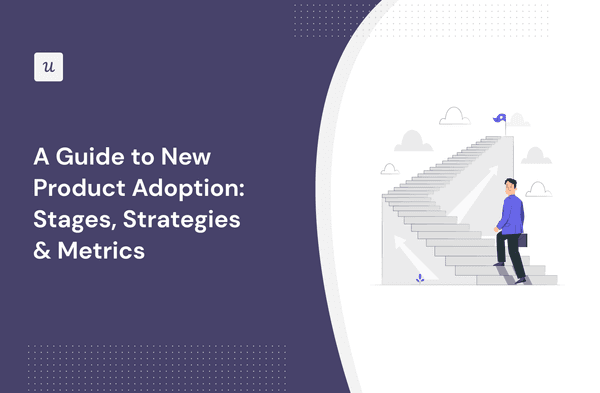
What are Vanity Metrics in Product Marketing? Definition & Examples
Picture this: Your social media followers are skyrocketing, your website traffic is through the roof, and your free trial sign-ups are off the charts. Sounds great, right?
Well, sorry to disappoint you, but you might be getting excited about the wrong marketing metrics.
Vanity metrics.
From the article, you will learn what vanity metrics are, how to identify them, and how to choose more actionable alternatives to drive product growth.
Let’s dive right in.
Try Userpilot Now
See Why 1,000+ Teams Choose Userpilot

TL;DR
- Vanity metrics appear impressive but don’t provide actionable insights or inform future strategies.
- Unlike vanity metrics, actionable metrics drive the product forward and directly correlate with business goals.
- Examples of vanity metrics include:
– Free trial user count: It only shows how many people started a trial, not how many found value in your product.
– Total users: It doesn’t indicate how many are actively using your product.
– Total customers acquired: This metric doesn’t account for the cost or profitability of acquiring these customers.
– Monthly revenue per customer: It doesn’t consider the long-term value of a customer or account for potential churn. - To identify actionable metrics for your business:
- Define clear business goals.
- Choose metrics that directly correlate with these objectives.
- Gather data from various sources (e.g., web analytics, in-app surveys, product analytics).
- Set benchmarks and targets using industry standards.
- Regularly adjust metrics to align with changing business strategies.
- Userpilot is a product growth platform that you can use to collect, visualize, and analyze user behavior data in custom dashboards. Book the demo to learn more!
What are vanity metrics and how to identify them?
Vanity metrics are data points that appear impressive on the surface but offer little insight into a product’s actual performance or growth.
For example, growing social media followers doesn’t necessarily mean improving your brand visibility or acquiring new customers.
Such metrics can create a false sense of success without providing actionable information.
To identify vanity metrics, ask yourself:
- Does this metric drive decision-making?
If a metric doesn’t help you make decisions about your product, marketing, or overall business strategy, it’s likely a vanity metric. For example, if your web traffic data doesn’t help you improve your content strategy, it’s a vanity metric. - Can you reproduce the results intentionally?
If you can’t identify clear steps to improve the metric, or if improvements happen randomly, it might be a vanity metric. For instance, you can directly influence your customer retention rate through targeted strategies, but you might not have as much control over the total number of page views. - Is the data reliable and reflective of true business impact?
If you can easily manipulate the metric, or it doesn’t translate to revenue, growth, or other key business outcomes, it’s probably a vanity metric. How useful is a high number of email subscribers if your open rates and click-through rates are low?
Vanity metrics vs. actionable metrics
While vanity metrics may boost your ego but, unlike actionable metrics, they don’t drive your business forward.
They are often standalone numbers without context, are easy to manipulate, and don’t necessarily correlate with business success.
On the other hand, actionable metrics are tied to specific business goals and provide insights that inform strategy and decision-making.
They are usually more complex, combining multiple data points to give a comprehensive view of performance.
For example, instead of focusing on total users, an actionable metric might be the percentage of active users who complete key actions within your product.

Examples of vanity metrics vs. actionable metrics
Let’s make the theory a bit more tangible and look at what makes specific metrics vanity metrics. And better alternatives.
Number of free trial users vs trial-to-paid conversion rate
The number of free trial users is a vanity metric because it doesn’t indicate how many will become paying customers.
Instead, focus on the trial-to-paid conversion rate.
This actionable metric shows the percentage of trial users who convert to paid subscriptions. It provides insights into the effectiveness of your onboarding process and the attractiveness of your product value proposition. It also has a direct impact on your business performance.
Number of total users vs. customer engagement score
Total user count is a vanity metric because it doesn’t reflect how actively users engage with your product. Yes, users might sign up for the free plan, but it’s no use if they don’t use the product.
Instead, use a customer engagement score.
This actionable metric combines factors like login frequency, feature usage, and time spent in the app to measure how invested users are in your product.
It helps identify at-risk customers and opportunities for increasing engagement. For improved retention and customer satisfaction.
Total customers acquired vs. customer acquisition cost
While acquiring customers is essential, the total number alone doesn’t tell you if you’re growing profitably.
Alternative?
Customer acquisition cost (CAC).
This actionable metric shows how much you’re spending to acquire each new customer.
By comparing CAC to customer lifetime value, you can determine if your acquisition strategies are sustainable and identify areas to optimize marketing spending for better ROI.

Monthly revenue per customer vs. customer lifetime value
Monthly revenue per customer is a short-sighted metric that doesn’t account for long-term customer relationships.
Customer lifetime value (CLV) is a more actionable metric.
It predicts a customer’s total revenue over their entire relationship with your business.
CLV helps you make informed decisions about pricing, retention, and account expansion strategies. To maximize long-term profitability.

How to identify actionable metrics for your business
How do you choose actionable metrics for your SaaS product?
Here’s our 5-step process:
1. Define your business goals
Start by clearly outlining your business objectives: Are you aiming for rapid growth, increased profitability, or improved customer retention?
Your goals will guide you in selecting the most relevant metrics to track.
For example, if your goal is to boost customer loyalty, you might focus on metrics like Net Promoter Score (NPS) or customer retention rate.
When choosing product goals, ensure they’re aligned with your overall business strategy.
2. Identify metrics that directly correlate with your business objective
Once you’ve defined your goals, pinpoint metrics that have a direct impact on achieving them.
Look for cause-and-effect relationships between your actions and the outcomes you’re seeking.
For instance, if your objective is to increase profits, Net Profit Margin could be a good metric to guide your efforts.
Once you choose your North Star metric, pick supporting metrics that will help you optimize specific aspects of the product performance related to your overarching goal.
In this example, these could be conversion rates or customer lifetime value.

3. Gather data from various data points
Next, it’s time to collect the data necessary to gain actionable insights.
The choice of the data collection methods depends on your metrics. Here are the key ones:
- Social media analytics: to track social media metrics like impressions and engagement.
- Web analytics: to track web traffic acquisition, website engagement metrics, click-through rates, and website and e-commerce conversion rates.
- In-app surveys: to track customer satisfaction and loyalty metrics like NPS, CSAT or PMF.
- Product analytics: to collect product usage and in-app engagement data and measure conversion rates at different user journey stages.
That’s potentially a lot of metrics from different sources to keep up with. Choosing your tools stack carefully, however, can help you alleviate the stress.
For example, in Userpilot, you can collect user feedback and in-app behavior data and thanks to integrations and webhooks – integrate data from various sources.
It gets better:
Userpilot supports custom analytics dashboards, so you can view all the data in one place without switching between reports or tools.

4. Set benchmarks and targets
Vanity metrics tend to lose their meaning without proper context.
Imagine your activation rate grows by 2% month-on-month. Excellent but what if the industry standard is 4%. Not so impressive anymore, right?
Follow industry benchmarks like Userpilot’s SaaS Product Success Growth Metrics report to prevent this.
And set targets accordingly.

5. Adjust metrics as needed to align with changing business objectives and future strategies
As your business evolves, so should your metrics.
Regularly reassess your key performance indicators to ensure they still align with your current goals and future strategies. Be prepared to retire metrics that are no longer relevant and introduce new ones that better reflect your business priorities.
This flexibility allows you to stay agile and responsive to market changes and internal shifts in focus.
Conclusion
Vanity metrics make us feel good, but they can skew your perception of reality. And they don’t help you make better decisions.
Instead of using metrics that only stroke your ego, look for more actionable metrics that accurately indicate progress and offer valuable insights that inform future strategies.
If you’d like to learn more about Userpilot and how to use it to track actionable metrics for your SaaS product, book the demo!







